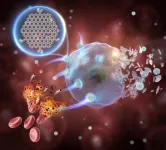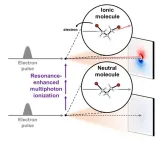(Press-News.org) The global fertility rate is declining and most governments are failing to recognize and address the impact on economies and societies, say a group of physicians invited by the International Federation of Fertility Societies (IFFS) in a new paper and campaign launched today.
“Not including the effects of migration, many countries are predicted to have a population decline of more than 50% from 2017 to 2100,” the physicians write in “Declining global fertility rates and the implications for family planning and family building,” published January 10, 2024 in Human Reproduction Update.
“By 2050, 77% of predominantly high-income countries, and by 2100, 93% of all countries will have a total fertility rate below the replacement level of 2.1 children per woman,” write the paper’s authors who include fertility specialists from Australia, Chile, Denmark, Egypt, Greece, The Netherlands, South Africa, Switzerland, United Kingdom, and the United States.
With underpopulation becoming a great concern in a rapidly increasing number of countries, the paper provides recommendations for what governments, policymakers, companies, health care professionals, and patients can do to address infertility risk factors and make fertility care more affordable and accessible.
“Choosing to have a family is a human right,” said Bart CJM Fauser, co-first author of the paper, IFFS Scientific Director and Professor Em. of Reproductive Medicine at Netherlands’ Utrecht University. “But access to fertility care is often unaffordable, inaccessible, and inequitable and that needs to change.”
The authors point out that there have been “major advances in fertility care that have dramatically improved family building opportunities (for infertile couples, singles and members of the LBGTQ+ community) over the last three decades,” but equity remains a challenge across countries, cultures, and economies.
“The good news is that infertility is often preventable,” said IFFS President Edgar Mocanu. “A simple step is offering balanced fertility and contraceptive education so that everybody can decide when to prevent pregnancy and when it is ideal for them to start a family, if they choose.”
One in six people of reproductive age grapple with infertility and the problem affects women and men equally. Some sexually transmitted infections, “smoking, excessive alcohol intake, obesity, and poor nutrition can negatively affect both male and female fertility,” say the authors. Alarmingly, infertility risk factors such as air pollution and the proliferation of harmful and poorly regulated chemicals are increasing, making it critical for policymakers to develop and implement policies that reduce environmental infertility risk factors.
Solutions to improving birth rates, the authors say include “policy measures supporting families and working women” such as compensation for extended pregnancy leave and childcare, parental leave, and increased access to assisted reproductive technology services (ART).
“While more than 10 percent of all children are born with fertility assistance in some wealthy countries, there is great variation in access to care and the high cost remains a barrier across the board,” said Dr. Luca Gianaroli, IFFS Director of Education, and former chairman of the European Society of Human Reproduction and Embryology. “A limited number of countries have started public funding of fertility treatment to mitigate falling birth rates, and the IFFS is asking that more countries consider providing financial assistance for individuals needing fertility care.”
Among their many recommendations, the physicians cite four main calls for action that will be part of their ‘More Joy’ global awareness and education campaign:
Governments and companies need to develop policies to reduce infertility risk factors and make fertility care more affordable, accessible, and equitable.
There is an urgent need to develop simpler, less intensive and less expensive assisted reproductive technologies.
Health care professionals need to educate their patients about infertility prevention and include fertility awareness as part of family planning and contraceptive education.
Infrastructure and support are needed to increase access to care, especially in low-resource countries.
“The economic benefits to society of providing fertility care clearly exceed the cost of treatment, and these benefits will only increase as populations become more aged,” the physicians write.
More Joy Campaign materials are available in 15 languages and can be found at https://www.iffsreproduction.org/morejoycampaign/
Link to the paper: https://doi.org/10.1093/humupd/dmad028
Authors: Bart C.J.M. Fauser, University Medical Center Utrecht, University of Utrecht, Netherlands; G. David Adamson, ARC Fertility, USA; Jacky Boivin, Cardiff University, UK; Georgina M. Chambers, University of New South Wales, Australia; Christian de Geyter, University Hospital, University of Basel, Switzerland; Silke Dyer, Groot Schuur Hospital and Faculty of Health Sciences, University of Cape Town, South Africa; Marcia C. Inhorn, Yale University, USA; Lone Schmidt, University of Copenhagen, Denmark; Gamal I. Serour, Al Azhar University, Egypt; Basil Tarlatzis, Aristotle University of Thessaloniki, Greece; and Fernando Zegers-Hochschild, Universidad Diego Portales, Chile
MEDIA CONTACT: Susan Lamontagne, susan@publicinterestmedia.com or 1-917-568-0969
END
Countries and companies need to address declining global fertility rates, doctors say
Infertility risk factors must be reduced and access to affordable fertility care improved
2024-01-10
ELSE PRESS RELEASES FROM THIS DATE:
The reaction mechanism for catalytic ammonia production experimentally determined
2024-01-10
Researchers at Stockholm University have for the first time been able to study the surface of iron and ruthenium catalysts when ammonia is formed from nitrogen and hydrogen; the results are published in the scientific journal Nature. A better knowledge of the catalytic process and the possibility of finding even more efficient materials opens the door for a green transition in the currently very CO2-intensive chemical industry.
Ammonia, produced in the Haber-Bosch process, is currently one of the most essential base chemicals for the world to produce fertilizers, with an annual production of 110 million tones. The journal ...
Ancient DNA reveals reason for high multiple sclerosis and Alzheimer’s rates in Europe
2024-01-10
Researchers have created the world’s largest ancient human gene bank by analysing the bones and teeth of almost 5,000 humans who lived across western Europe and Asia up to 34,000 years ago.
By sequencing ancient human DNA and comparing it to modern-day samples, the international team of experts mapped the historical spread of genes – and diseases – over time as populations migrated.
The ‘astounding’ results have been revealed in four trailblazing research papers published today (10 January 2024) in the same issue of Nature and provide new ...
Noninvasive test for embryo quality could streamline fertility treatment
2024-01-10
In-vitro-fertilization (IVF), a fertility treatment that involves fertilizing eggs in the laboratory and later implanting them in the uterus, has been a source of hope for many people struggling to conceive. However, the multi-step process is complex, and the overall live birth rate after IVF treatment is only 20-40% in females younger than 40 in the United States. One of the reasons for this low success rate is that it’s very difficult for doctors to determine which lab-grown embryos are most likely to result in a successful pregnancy, so many people seeking IVF must go through multiple rounds of treatment.
Now, scientists at University of California San Diego School of ...
Metal-free graphene quantum dots show promise for highly efficient tumor therapy
2024-01-10
A research group led by Prof. WANG Hui from the Hefei Institutes of Physical Science (HFIPS) of the Chinese Academy of Sciences has introduced a metal-free nanozyme based on graphene quantum dots (GQDs) for highly efficient tumor chemodynamic therapy (CDT).
The study was published in Matter.
GQDs represent a promising and cost-effective means of addressing the toxicity concerns associated with metal-based nanozymes in tumor CDT. However, the limited catalytic activity of GQDs has posed significant challenges for their clinical application, particularly under challenging catalytic conditions.
"The obtained GQDs, which are made from red blood cell membranes, ...
Scientists name the commonest tropical tree species for the first time
2024-01-10
UCL Press Release + table
Under embargo until Wednesday 10 January 2024, 16:00 UK time / 11:00 US Eastern time
A major international collaboration of 356 scientists led by UCL researchers has found almost identical patterns of tree diversity across the world’s tropical forests.
The study of over one million trees across 1,568 locations, published in Nature, found that just 2.2% of tree species make up 50% of the total number of trees in tropical forests across Africa, the Amazon, and Southeast Asia. Each continent consists of the same proportion of a few common species and many rare species.
While ...
Global prevalence of adolescent use of nonprescription weight-loss products
2024-01-10
About The Study: This meta-analysis that included 90 studies with 604,000 participants found that use of weight-loss products occurs at high levels in adolescents, especially girls. These findings suggest that, given the ineffectiveness of these products for weight loss coupled with their harmful long-term health consequences, interventions are required to reduce use of weight-loss products in this group.
Authors: Natasha Yvonne Hall, Pharm.B., M.H.E., of Deakin University in Melbourne, Australia, is the corresponding author.
To access the embargoed study: Visit our For ...
Early prediction of autistic spectrum disorder using developmental surveillance data
2024-01-10
About The Study: In this study of nearly 1.2 million children, prediction models achieved high performance in predicting the likelihood of autistic spectrum disorder, using information from routine developmental assessments. This tool may be seamlessly integrated in the clinical workflow to improve early identification of children who may benefit from timely interventions.
Authors: Guy Amit, Ph.D., of the KI Research Institute in Kfar Malal, Israel, is the corresponding author.
To access the embargoed study: Visit our For The Media website at this link https://media.jamanetwork.com/
(doi:10.1001/jamanetworkopen.2023.51052)
Editor’s ...
Epic of a molecular ion: With eyes of electrons
2024-01-10
Ions are everywhere, from our daily surroundings to the cosmic expanse. As common table salt (NaCl) dissolves into sodium (Na+) and chloride (Cl-) ions in water, it imparts a salty taste. Once absorbed by the body, these ions regulate nerve impulses and muscle movements. In the sun, plasma—a gathering of ions in the gaseous state—undergoes nuclear fusion reactions, transmitting light and energy to Earth. One of the most noteworthy usage ions in everyday life is found in lithium-ion batteries, ...
Scientists find “key” to potential breast cancer prevention, treatment
2024-01-10
CHAPEL HILL, N.C. – Every time a cancer cell divides, it sustains damage to its own DNA molecules. Researchers, including Gaorav Gupta, MD, PhD, associate professor in the Department of Radiation Oncology at the UNC School of Medicine, have long wondered how cancers are able to evade detection by the body’s own defenses, despite the immune system being on constant watch for cells displaying DNA damage.
New findings by Gupta’s lab, which were published in Nature, shows how the cGAS-STING pathway – a pathway inside cells essential for activating the inflammatory immune response – is unleashed to prevent cancer formation by detecting DNA damage within ...
Almost 1:10 adolescents non-prescription weight loss products globally
2024-01-10
One in ten adolescents globally have used ineffective and potentially harmful non prescribed weight loss products in their lifetime, with 2% using them in the previous week.
A review, of over 90 studies of 600,000+ participants, headed by Ms Natasha Hall fro0m Monash University's School of Public Health and Preventive Medicine and published in the Journal of the American Medical Association has found that adolescent use of non prescription weight loss products is 5.5% overall, 2% in the past week; 4.4% in the past month, 6.2% in the past year and 8.9% in their lifetime.
The authors caution against the long term consequences of these ineffective treatments. END ...
LAST 30 PRESS RELEASES:
Bluey’s dad offered professorial chair in archaeology at Griffith University
Beyond small data limitations: Transfer learning-enabled framework for predicting mechanical properties of aluminum matrix composites
Unveiling non-thermal catalytic origin of direct current-promoted catalysis for energy-efficient transformation of greenhouse gases to valuable chemicals
Chronic breathlessness emerging as a hidden strain on hospitals
Paleontologists find first fossil bee nests made inside fossil bones
These fossils were the perfect home for ancient baby bees
Not everyone reads the room the same. A new study examines why.
New research identifies linked energy, immune and vascular changes in ME/CFS
Concurrent frailty + depression likely boost dementia risk in older people
Living in substandard housing linked to kids’ missed schooling and poor grades
Little awareness of medical + psychological complexities of steroid cream withdrawal
Eight in 10 trusts caring for emergency department patients in corridors, finds BMJ investigation
NASA’s Webb telescope finds bizarre atmosphere on a lemon-shaped exoplanet
The gut bacteria that put the brakes on weight gain in mice
Exploring how patients feel about AI transcription
Category ‘6’ tropical cyclone hot spots are growing
Video: Drivers struggle to multitask when using dashboard touch screens, study finds
SLU research shows surge in alcohol-related liver disease driving ‘deaths of despair’
Rising heat reshapes how microbes break down microplastics, new review finds
Roots reveal a hidden carbon pathway in maize plants
Membrane magic: FAMU-FSU researchers repurpose fuel cells membranes for new applications
UN Member States pledge to increase access to diagnosis and inhaled medicines for the 480 million people living with COPD
Combination therapy shows potential to treat pediatric brain cancer ATRT
Study links seabird nesting to shark turf wars in Hawai‘i
Legal sports betting linked to sharp increases in violent crime, study finds
Breakthrough AI from NYUAD speeds up discovery of life-supporting microbes
New Eva Mayr-Stihl Foundation funding initiative boosts research at University of Freiburg on adaptation of forests to global change
The perfect plastic? Plant-based, fully saltwater degradable, zero microplastics
Bias in data may be blocking AI’s potential to combat antibiotic resistance
Article-level metrics would provide more recognition to most researchers than journal-level metrics
[Press-News.org] Countries and companies need to address declining global fertility rates, doctors sayInfertility risk factors must be reduced and access to affordable fertility care improved





